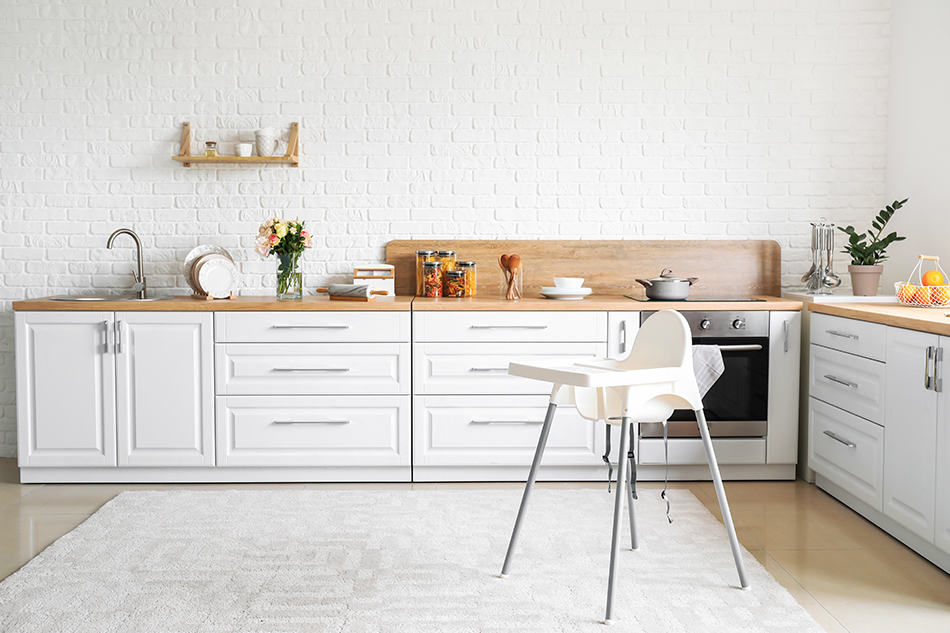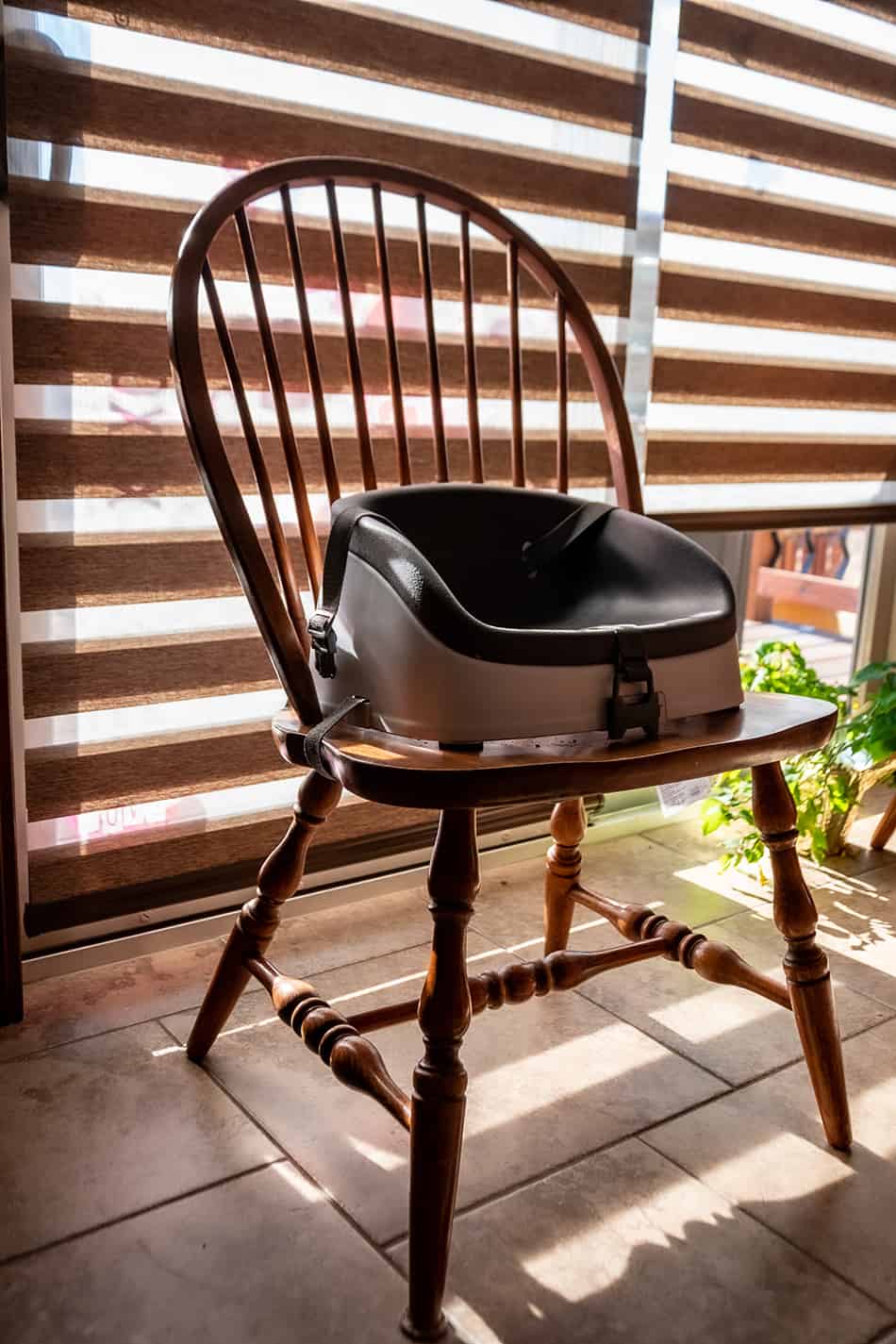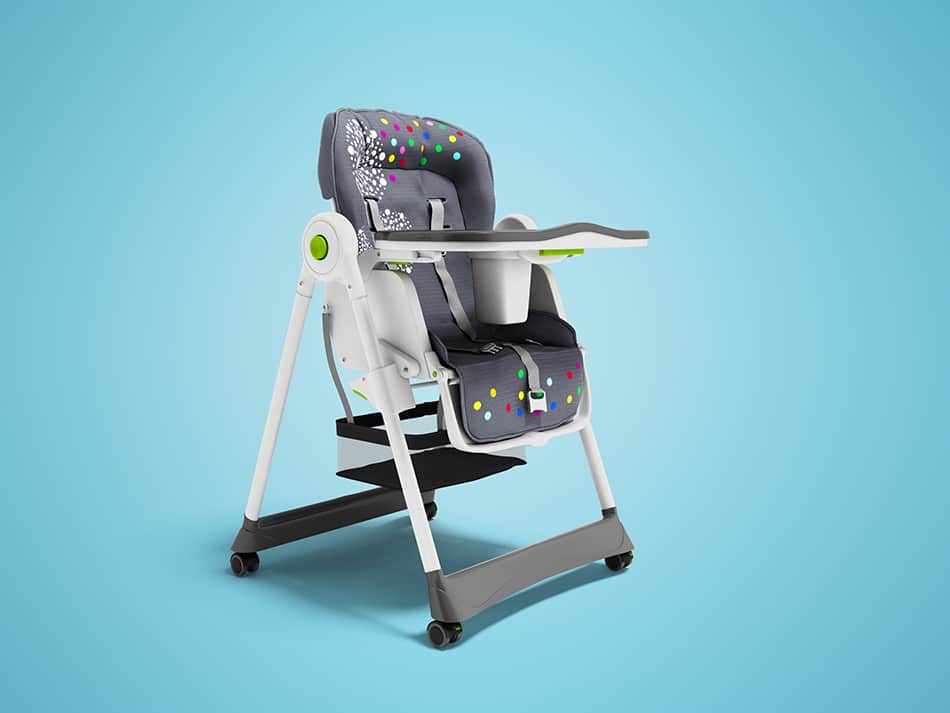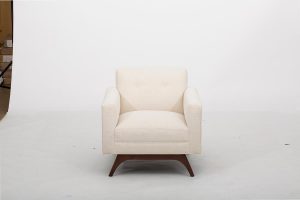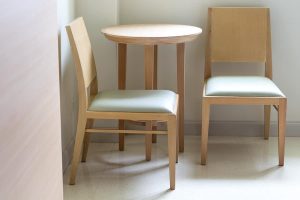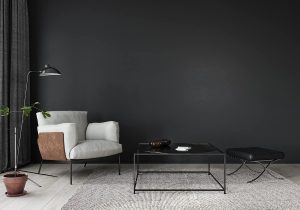The parenting life is full of rites of passage. As your little blessing checks off their first chuckle, some simple words, and even a few independent steps, eventually, the time comes for them to sit at the adult table.
Granted, they may not be able to eat adult foods or sit by themselves for a full hour, but getting your kids to join in at family meals still feels like a huge accomplishment. At this point, most families will probably use a special “high chair” that can contain the little one’s mess and keep them safe.
However, high chairs can be pretty expensive. They are also almost always too large for transport (so forget about packing it in the car when you visit a friend) or to be hidden from view when you have company. It stands to reason, then, that some parents wonder if all this fuss is worth it over a piece of furniture that their kid will outgrow in a year or two.
Do We Really Need A High Chair?
Most babies begin to transition toward solids at about six months old. Between 6 and 9 months, sitting down with their family at mealtimes will also help with bonding and socialization. Yet, toddlers under the age of three are almost always too small to sit on a regular chair.
Before the age of 2, they may also just not have enough back strength to sit upright for a whole hour – plus, their natural curiosity can quickly turn into a dangerous fall.
During this period, toddlers will also develop the necessary dexterity to operate spoons and sippy cups. Until they don’t, you will also need them to have a separate space or tray of their own; otherwise, expect lots of spilled juice to make its way into your plate.
This means that between the ages of six months and three years, you need something to keep your toddler safe during mealtimes.
The good news? All these needs don’t need to be met by a high chair. Alternatives exist!
6 Alternatives for a High Chair
The alternatives listed here are all either smaller or less expensive than traditional high chairs. Look them up to make an informed purchase!
Toddler Tower
Ideal for: restless kids, homes with little space, future chefs and artists
At first glance, toddler towers (or “learning towers”) look very similar to traditional high chairs.
Second, they replace a traditional seat with a much lower platform, meant to allow your little one to stand up during the meal. Naturally, this platform is surrounded by a smartly placed fence, which will keep him or her from jumping out and causing mayhem.
This is a great alternative for energetic, restless kids who are not ready to sit for a full half an hour. It doesn’t require any belts that would hinder their movements or possibly scratch their delicate skin. Another bonus is that they are much more versatile than standard high chairs.
If your kid is naturally curious and likes to watch you cooking, sewing, drawing, or doing any other manual chore on top of a table, this will give you a great way to get them involved safely. Perched up in their tower, they can stand, move around, and point at interesting objects without fear of burns or falls.
One major drawback? For a kid to be able to stand up through a whole meal, you may need to wait until he or she has developed the appropriate muscle strength. This may not happen until about 18 months.
Hook-on Seat
Ideal for: Parents with small kitchens and square or rectangular tables, babies under the age of 2
A hook-on seat allows you to skip the hassle of a separate piece of furniture altogether. Instead, these chairs are attached directly to one of the sides of the table and are floating next to it.
On a hook-on seat, the seat itself looks largely reminiscent of a car seat: it is a one-piece, hardshell piece of round plastic, padded on the inside, and with a couple of extra belts for added safety. These seats don’t offer a separate tray or table of their own: instead, as they are attached directly to the table, letting them use the same table as the adults.
The lack of a tray may pose a problem for some kids, as you may end up with baby food spills all over the adult table. However, some models beat this issue by including a detachable tray, which is installed on top of the hooks that hold the seat. After the meal, you can just remove it and stick it in the dishwasher.
This will leave their little legs hanging. This could be uncomfortable for some kids, but if you have an adventurous one at hand, then look for a model with a swivel. This will let your child move around with a bit more freedom, turn around to look at other things, may even work as a swing outside of mealtimes.
Finally, hook-on seats have another major advantage: they are significantly cheaper than full-sized high chairs. On average, the price for a hook-on seat is barely half of that of a wooden high chair.
Travel Harness
Ideal for: budget-conscious parents, those who like to take their kid on outings, or are strapped for space
A travel harness is a mostly fabric addition that can be placed on top of almost any chair with an armrest and will “strap” your kid comfortably to the chair.
This harness includes abundant padding on top of the seating surface, which will raise the kid to the necessary height for them to reach the table comfortably. Attached to the padding is a backrest cover, which then holds up a five-point harness. Most models will allow you to close the straps using either Velcro or backpack buckles.
As they are made of fabric, these harnesses are very easy to clean – just remove them from the chair and stick them into the washing machine. Most models are also very easy to remove or reattach to a new chair, and they roll up very tightly when it’s time to pack them away. Because of this, they are an ideal choice for a road trip or a quick outing.
Most travel harnesses are also very inexpensive – enough that you may want to have one for the house and one for the car.
Their only downside is that they provide limited space for the baby itself. Some brands offer different sizes, which may be able to accommodate your child as it grows. However, most “one size” models will become too small around the 2-year-old mark.
Chair Booster
Ideal for: children who are almost three or transitioning to adult chairs
If you cruised through the first two years of solids using travel harnesses, but your kid is now too big for them, there’s a good chance that they will also be approaching the time when they can use regular chairs. At this point, it may make little sense to buy a new high chair or even a booster seat if you will only use it for a few months.
A chair booster is a nice, cost-effective option to bridge this gap. It consists of a small platform meant to be placed under the chair, therefore lifting it by a few inches. Naturally, most models also have a few extra anti-skid features meant to increase their safety rating. On the other hand, they won’t include any harnesses or belts that will keep the child attached to the chair.
Think of chair boosters as a cleaner alternative to the old cushion pile that many of us used when we weren’t tall enough for adult chairs.
Booster Seat
Ideal for: Budget-conscious families with sturdy chairs
The counterpart of the chair booster is the booster seat. Where the former works to adjust the chair’s total height from the bottom, the booster seat attaches itself to the top of the chair to create a high chair alternative.
A booster seat is essentially a “tray and car seat” that you can add to one of your existing chairs. Most models use either buckles or elastic to secure against the existing chair. Meanwhile, the child can just slide into the chair from the top and be seated just like on a baby swing.
One of the main advantages of booster seats is that they place the child at roughly the same height as the rest of the family. This will enable everyone to keep eye contact and will promote bonding among family members. However, the child will still get their tray in which to keep their food and drink.
If installed on a sturdy or wide chair, a booster seat may offer the same level of safety as a standard high chair. However, on light chairs (such as those ubiquitous stackable plastic chairs commonly used in BBQs), you may need to be a little more careful: your toddler may swing their legs enough to topple both seat and chair.
Folding High Chair
Ideal for: Parents who want a beautiful high chair but have small homes
A folding high chair is not an alternative to high chairs – it is, in almost every possible way, a fully-featured high chair. However, folding models use the same type of legs as an ironing board, as well as a removable eating tray. In this way, they can be folded after meals and tucked away in a closet or next to the fridge.
Most folding high chairs end up being a little bit lower than standard high chairs, so you will need to sit, rather than stand, next to the child.
Folding high chairs tend to be easier to clean, especially if you get a model with a dishwasher-friendly serving tray. On the other hand, they can cost almost as much as a traditional high chair, and they won’t save you much standing space in the dining area – only storage space.
In The End, It’s Up to You
There are now several options available for anyone who doesn’t want to spend the space or money required for a full-sized high chair. Each one will have its drawbacks. Check your own living space and take a good look at your kid’s energy levels before you make a decision.
